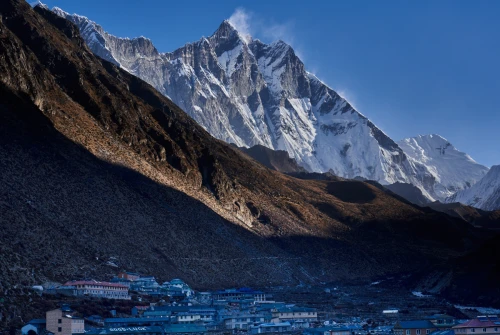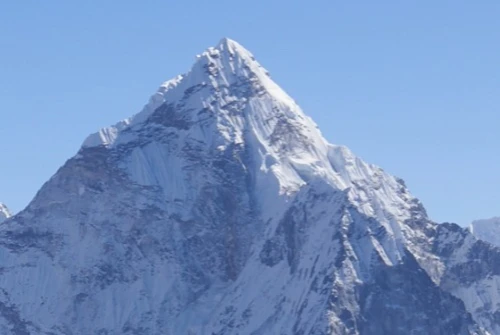One of the most challenging and adventurous treks in the Mt. Everest region is the journey that connects Everest Base Camp and Gokyo Lake via the Cho La Pass. This trek offers stunning views of the world’s highest peak, including the picturesque Gokyo Lake and Gokyo Ri (5467m), Everest Base Camp (5356m), and the famous Mt. Everest Sunrise Viewpoint (Kalapathar, 5545m). For trekkers looking to enhance their Everest Base Camp experience, this trek is an ideal choice.
The adventure begins with a scenic 40-minute flight from Kathmandu to Lukla, which marks the start of a 16-day trek to Everest Base Camp and Gokyo Lake via Cho La Pass. The trek follows a route that first takes you to Kalapathar and Everest Base Camp, then leads you over the Cho La Pass to the serene Gokyo Lakes. The trek's high point includes a spectacular view from Gokyo Ri, where trekkers are treated to panoramic vistas of the Gokyo Valley, the Ngozumpa Glacier, and the towering peaks of the Himalayas, including Mount Everest itself.
For many adventurers, reaching Everest Base Camp is a bucket-list goal, and the rewards are clear. The awe-inspiring views of Everest and other mighty peaks as you trek along the base of these snow giants are unforgettable. Adding the Gokyo and Cho La Pass routes only enhances the experience.
The Gokyo Lake, Kalapathar, and Everest Base Camp Trek demand excellent physical condition, as trekkers will need to navigate rugged terrain for up to 6 to 7 hours daily. Don’t worry if you're concerned about your physical fitness our expert guides and support staff are here to assist you, ensuring that the trek matches your interests and abilities while keeping safety a top priority. We will also ensure proper acclimatization to avoid altitude sickness.
Despite the challenges, trekking to Everest Base Camp and Gokyo Lake is not overly difficult as long as you follow basic guidelines. However, altitude sickness (AMS) and severe weather conditions can present obstacles. Rest assured, heli-rescue services are available in emergencies.
Gokyo Cho La Pass Everest Base Camp Trek Difficulty
The Gokyo Cho La Pass Everest Base Camp Trek is known for its rugged terrain and high-altitude conditions. The trek includes some of the most iconic and thrilling elements of the Everest region, such as crossing high mountain passes and reaching Everest Base Camp—the base of the world’s tallest peak. The primary challenge of this trek is the altitude. As you ascend to greater heights, the air becomes thinner, leading to a drop in oxygen levels. To avoid health risks, proper acclimatization is essential. Our itinerary includes strategic acclimatization days to mitigate this risk.
Additionally, crossing the Cho La Pass presents physical and technical challenges. The pass can be steep and icy, particularly during certain seasons. Trekking poles are highly recommended to assist with balance and stability. Weather conditions also fluctuate, making it vital to prepare for freezing temperatures, snow, and rain, particularly during winter or monsoon months.
Overall, while the Gokyo Cho La Pass Everest Base Camp Trek is demanding, it offers unmatched beauty and adventure. Proper preparation, physical fitness, and mental determination will help you tackle the terrain and enjoy this once-in-a-lifetime experience. Trekkers should be in good health and have prior trekking experience to fully enjoy the trek and ensure safety.
Best Time to Trek to Gokyo Cho La Pass Everest Base Camp Trek
The weather in the Everest region can be unpredictable, so selecting the right season is crucial for optimal trekking conditions. The best times to trek are during the spring (March to May) and autumn (September to November) seasons.
Spring Season: This period is considered ideal for trekking. As temperatures rise and the weather clears, the forests bloom, offering lush greenery and fantastic Himalayan views.
Autumn Season: This is the peak tourist season, marked by clear skies and pleasant temperatures. Autumn also coincides with Nepal's vibrant festivals, adding cultural richness to your trek. It's highly recommended to plan your trip during this season, as you may also benefit from festive discount offers.
While summer months are less recommended due to heavy rain and slippery trails, All Nepal Hiking can arrange alternative trekking routes during this time for those who can only visit Nepal in the summer.
Foods During Gokyo Cho La Pass Everest Base Camp Trek
During this high-altitude trek, maintaining good nutrition is essential to sustain your energy levels. All Nepal Hiking ensures you receive a balanced, high-calorie diet daily, with a wide selection of options to suit different dietary preferences, including vegan meals. Whether you have food allergies or restrictions, we are committed to meeting your nutritional needs for a safe and enjoyable trek.
Accommodation During the Gokyo Cho La Pass Everest Base Camp Trek
Accommodation along the 14-day trek is a combination of comfort and simplicity. In lower-altitude areas such as Namche, Phakding, and Lukla, you can select from a variety of room options. However, as you ascend to higher altitudes for acclimatization, your options may become more limited, with most accommodations offering twin-sharing rooms. The team at All Nepal Hiking ensures that you stay in the best available tea houses, offering both comfort and excellent views of the surrounding mountains.
Extraordinary Views During Gokyo Cho La Pass Everest Base Camp Trek
The Gokyo Cho La Pass Everest Base Camp Trek is undeniably one of the most visually spectacular trekking experiences in the Himalayas. This epic journey masterfully combines the peaceful allure of the Gokyo Lakes, the adventurous ascent of Cho La Pass (5,420 meters), and the legendary destination of Everest Base Camp. It presents a rare chance to witness the full grandeur of the Everest region of Nepal, with a mesmerizing mix of alpine scenery, high-altitude lakes, sacred peaks, massive glaciers, and Sherpa culture.
As you make your way through the heart of the Khumbu region, the trail offers breathtaking and uninterrupted views of some of the world’s highest and most iconic peaks. Towering above all is Mount Everest (8,848 meters), whose snow-capped summit dominates the skyline. Alongside Everest stands Lhotse (8,516 meters), the world's fourth-highest mountain, casting its mighty shadow over the valley below. Equally impressive is Cho Oyu (8,188 meters), which looms just above Gokyo village, while Makalu (8,485 meters) reveals itself from viewpoints like Gokyo Ri, adding to the magical horizon of eight-thousanders.
The scenery doesn’t end with the giants. You’ll also witness the sharp ridges of Ama Dablam, often considered the most beautiful mountain in the Himalayas, along with Thamserku, Nuptse, and Pumori each adding their own charm to the dramatic backdrop. These stunning views are accompanied by shifting perspectives throughout the trek, offering new angles and lighting that make every step feel like a fresh postcard moment.
Beyond just peaks, the trek is packed with scenic and spiritual highlights. The mystical Gokyo Valley is home to a series of turquoise glacial lakes nestled among rugged mountain ridges. These sacred lakes are considered holy by both Hindus and Buddhists, and the reflections of the surrounding peaks in their clear waters create moments of stillness and awe. Climbing Gokyo Ri (5,357 meters) provides one of the best panoramic viewpoints in Nepal many trekkers say the 360-degree views from here surpass those from Kala Patthar, offering a sweeping vista of Everest, Lhotse, Makalu, and Cho Oyu all at once.
The journey across the Ngozumpa Glacier, the longest glacier in Nepal, is both thrilling and humbling. You’ll walk beside and over vast stretches of ice and moraine, surrounded by sheer rock walls and snow-covered summits. From there, the trek ascends to Cho La Pass, a high-altitude crossing that connects the Gokyo Valley to the classic Everest Base Camp trail. Though challenging, the Cho La crossing is a visual masterpiece, with icy trails, frozen lakes, and towering peaks forming a cinematic landscape that few ever witness.
Once on the traditional EBC route, you’ll reach Kala Patthar (5,545 meters), the best vantage point for close-up sunrise views of Mount Everest, glowing golden in the early morning light. Finally, standing at Everest Base Camp (5,364 meters) itself is a spiritual moment for many amidst colorful prayer flags and the immense presence of the Khumbu Icefall, you’ll feel the raw power of nature and the spirit of the mountaineers who challenge this great peak.
What makes the Gokyo Lake and Everest Base Camp Trek via Cho La Pass so unique is that it offers all the major highlights of the Everest region while steering you away from the busier main trail for much of the journey. It is ideal for those looking to experience the quiet solitude of alpine lakes, the thrill of crossing glacial terrain, and the cultural depth of Sherpa villages all while capturing the full sweep of the Everest Himalayan range. With changing scenery every day, this trek delivers not only an unforgettable physical challenge but also a continuous visual feast that defines trekking in Nepal.
Permits Required During Gokyo Cho La Pass Everest Base Camp Trek
Before embarking on the breathtaking Gokyo Cho La Pass Everest Base Camp Trek, it is essential to obtain the necessary permits to ensure a smooth and legal journey through the protected areas of the Khumbu region of Nepal. These permits not only grant access to the trekking routes but also contribute to the conservation of the natural environment and the support of local Sherpa communities that maintain the trails and infrastructure.
The first and most important permit is the Sagarmatha National Park Entry Permit, required for entering Sagarmatha National Park, a UNESCO World Heritage Site that encompasses the core of the Everest trekking region. This permit is available either at the Nepal Tourism Board office in Kathmandu or at the park entrance in Monjo, a small checkpoint village located just beyond Phakding. The cost of the Sagarmatha National Park Permit is NPR 3,000 per person, which is approximately USD 23 to 25. This fee directly supports conservation efforts, helping to preserve the region’s unique high-altitude ecosystem, including rare wildlife species, alpine vegetation, and glacial rivers.
The second essential document is the Khumbu Pasang Lhamu Rural Municipality Entrance Permit, which is required for all trekkers entering the Khumbu region through Lukla, the main gateway to the Everest trails. This permit must be obtained at the rural municipality counter in Lukla upon arrival. The cost is NPR 2,000 per person (around USD 15 to 17), and the funds collected are used for infrastructure maintenance, trail repair, waste management, and sustainable development initiatives in the local Sherpa villages along the trekking route.
While the TIMS Card (Trekkers’ Information Management System) is no longer mandatory for trekkers in the Everest region, it remains relevant in other parts of Nepal and may still be required by some agencies. However, for the Gokyo and Everest Base Camp Trek via Cho La Pass, only the two permits mentioned above are compulsory.
In addition to these permits, having high-altitude travel insurance is strongly advised. The Gokyo Cho La Pass route includes several days above 4,500 meters, and the crossing of Cho La Pass (5,420 meters) can be physically demanding. Risks such as Acute Mountain Sickness (AMS), weather-related delays, or emergency evacuation are real concerns, and proper insurance coverage ensures safety and peace of mind throughout the journey.
Securing the right permits and insurance not only ensures that you are trekking responsibly but also helps sustain one of the most beautiful mountain environments on the planet. Be sure to carry multiple photocopies of your permits and identification, as checkpoints along the route will require verification.

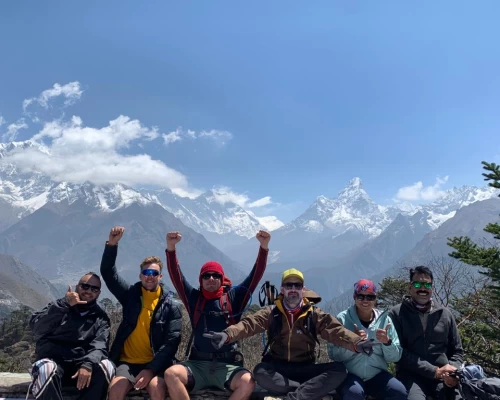
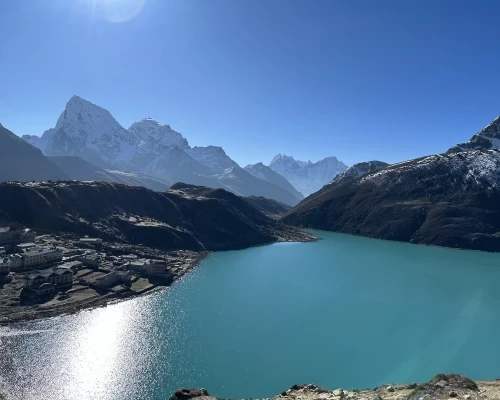
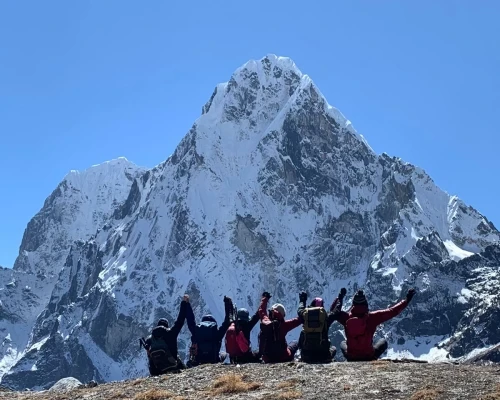
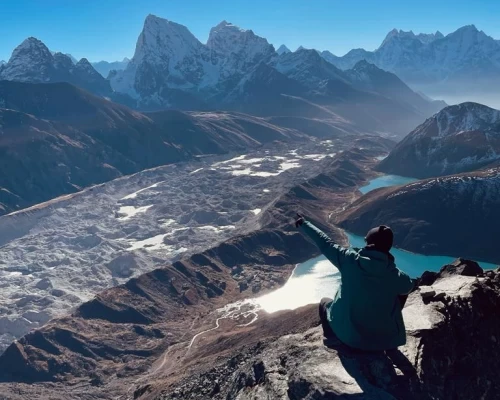
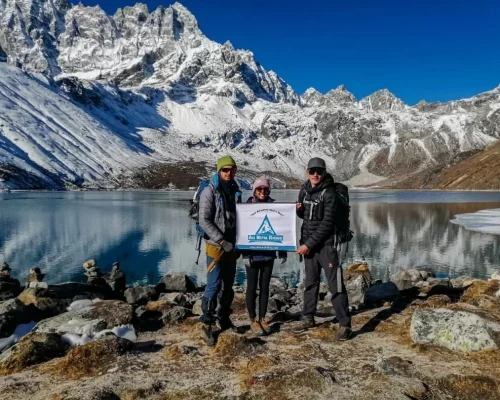
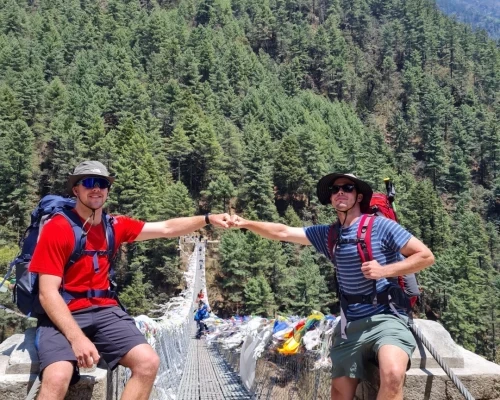


 based on 9 reviews
based on 9 reviews